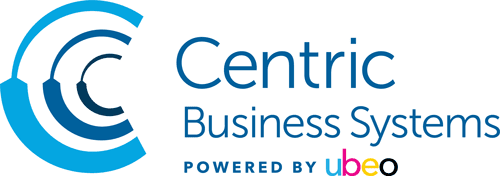Key Features to Add to Your MFP Wish List
Upgrading an old multifunction printer (MFP) to a new model that uses the latest technology and features can bring many benefits to an organization, including lower maintenance and operating costs, reduced energy consumption and costs, increased employee productivity, and improved network and information security. Selecting a new MFP requires examining some basic requirements that you can read about here, but there are other features and functions you’ll want to make sure your next MFP delivers as well. Here are six important things to have on your wish list.
1. Intuitive touchscreen operator panel.
The operator panel is the first thing a user encounters on an MFP. You’ll want to make sure your next MFP has a large (5″- 8″) full-color touchscreen display similar to a smartphone or tablet, so it’s familiar and intuitive to use. Displays like this, found on MFP models from manufactures like HP, Ricoh, and Sharp, reduce confusion and decrease mistakes, thereby improving user satisfaction and increasing overall employee productivity. This kind of operator control panel also provides a platform that easily delivers the features and functions that come next on our list.
2. Cloud connectivity.
Although we’re including this on a wish list, in reality it is an absolute must-have today. Cloud services and repositories such as Office 365 and Google are increasingly common in the workplace, and an MFP’s ability to directly connect to these services lets employees access and print documents right from the MFP operator panel. They can also use the MFP to directly scan files into the cloud file services or email services, removing the need for a local PC to print a file or manage a scan and eliminating time-wasting steps.
3. Software and app integration to support business processes.
Even as business processes such as HR, accounts receivable, and accounts payable become digitized, they rely on information sometimes found only on the many paper forms and documents still in use today. An MFP that has a “smart” software and app platform like HP’s Workpath or Ricoh’s Smart Integration lets an organization simplify workflows by scanning and converting documents at the MFP and inserting them into the software or application used for the business process. Integrations can be created with familiar applications like SharePoint, iManage, Sage, Concur and many others, or customized for industry-specific needs or a firm’s special processes, whether they use on-premise server versions or cloud services. “Smart” apps are created and made available from the MFP’s operator panel for easy one-touch access. This results in speedier and more accurate data entry, eliminating costly and time-consuming data entry mistakes.
4. Mobile print and scan apps.
The use of smartphones and tablets is growing in the office. Whether issued by an organization, or as part of the bring your own device (BYOD) trend, employees are increasingly relying on these devices to communicate, access documents, and collaborate with their coworkers. So add to your wish list an MFP that supports mobile print and scan apps such as Ricoh’s Smart Device Connector or HP’s Smart App, which can be downloaded onto an employee’s mobile device. This allows them to print directly from their mobile devices or access the scanning features of the MFP.
5. Touchless print and scan operation.
What is the point, you may ask, of accessing scanning features from a phone rather than simply using the operator panel? Touchless print release and scan operation has become an important consideration during the COVID-19 pandemic. Maintaining the safety and well-being of workers during the current health crisis as well as throughout a normal work year is a top priority for firms. Rather than having everyone touch the MFP operator panel to change or release print jobs, employees can use an app on their smartphone to access print and scan functions. Some MFP models from Sharp even have voice-activated controls. Either way, minimizing an employee’s direct interaction with the MFP operator panel is one other way to reduce the spread of viruses and germs in the workplace.
6. Advanced security features.
Certain security features like password/PIN protection, print data encryption, and hard disk overwrite/erasure have been standard features on MFPs for many years. These are features that protect documents from being printed by unauthorized users, ensure print data is encrypted so that it is difficult to intercept and decipher over the network, and delete stored information that the MFP has printed. Often, though, these features are not turned on by default — if your firm hasn’t enabled all these features on your current MFP, you should contact your equipment provider and ensure they are enabled and used.
The security landscape has become increasingly treacherous, however, and the awareness that network printers and MFPs have become network “hacking” points has made advanced security features and functions more important than ever to include in a new MFP decision. Wish lists should include startup protection that detects malicious code on boot up and shuts down the device to prevent spreading malware, along with built in active virus protection for continuous monitoring and blocking of viruses and malware. These features can help prevent cyberattacks through the vulnerable network printer system.
A professional document management solutions provider like Centric Business Systems will show you the MFP model or models that best meet your basic requirements and fulfill these six things that should be on every firm’s MFP wish list. Contact us at www.centricbiz.com for more information or to schedule an appointment with one of our solutions specialists to discuss how to make your next MFP decision the best made.
Tags: Multifunctional Devices
